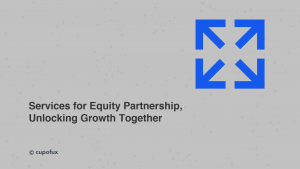As a software as a service company, it is critical to carefully analyze and optimize the costs associated with the development of your software in order to achieve profitability and sustain long-term growth.
In order to help you achieve this goal, we have put together this comprehensive guide that is packed full of useful strategies and best practices for optimizing your SaaS development costs.
By implementing these techniques and approaches, you can effectively reduce your expenditure on software development, and increase your chances of success in the highly competitive world of SaaS.
Define your target market and minimum viable product (MVP)
Clearly defining and identifying your target market and minimum viable product (MVP) is an essential step in the process of developing a successful software as a service (SaaS) offering.
By carefully analyzing and understanding the needs and preferences of your intended customer base, you can more effectively prioritize which features and functionality are most important to them and, as a result, minimize unnecessary development costs.
By focusing on the features and functionality that are most valuable to your customers, you can create a SaaS product that meets their needs and effectively addresses their pain points, while also minimizing your expenditure on unnecessary or less important development efforts. This approach can help you to more efficiently allocate your resources and increase the chances of success for your SaaS business.
Use agile development methodologies
Agile development methodologies, including Scrum and Kanban, provide a framework for flexible and iterative development, which can help to minimize costs by enabling you to make adjustments and adapt to changing circumstances in a timely manner.
These approaches allow for a more agile response to changing needs, allowing you to pivot and make changes as necessary in order to achieve your goals in an efficient and cost-effective manner.
By using agile development methodologies, you can take advantage of the benefits of iterative development, including the ability to test and refine your ideas quickly, and the ability to respond to feedback and changing market conditions in a rapid and flexible manner.
Leverage cloud infrastructure
By utilizing cloud infrastructure, businesses can potentially lower their initial expenditure and increase their financial flexibility by only paying for the resources they consume, rather than investing a significant amount of capital into expensive on-site infrastructure that may not be fully utilized or may not adequately meet the organization’s evolving needs.
This type of infrastructure allows organizations to easily and seamlessly scale their operations up or down, depending on their current and future requirements, without having to worry about the costs and complexities associated with maintaining and upgrading their own physical infrastructure.
Additionally, cloud infrastructure often provides access to a wide range of advanced technologies and services that can help organizations improve their efficiency, agility, and competitiveness, further enhancing the potential benefits of choosing this approach over traditional on-premises solutions.
Utilize low-cost or open-source tools
There are numerous tools that can be utilized for various tasks such as project management, testing, and design, which are either low-cost or open-source and can assist in reducing development costs.
These tools can be a great resource for individuals or organizations looking to optimize their budget while still being able to effectively manage their projects and ensure a high level of quality.
Some examples of these tools include Trello, Asana, and JIRA for project management, Selenium and Robot Framework for testing, and Sketch and InVision for design. By utilizing these resources, it is possible to streamline processes and minimize expenses while still maintaining a high level of efficiency and effectiveness.
Outsource non-core tasks
If you are looking to reduce costs while still maintaining the quality of your products or services, it may be worthwhile to consider outsourcing certain tasks that are not directly related to your core business operations.
This can include customer support, marketing, or other functions that may not be a primary focus for your organization.
By outsourcing these tasks to specialized companies or freelancers, you can take advantage of their expertise and potentially save on the costs of hiring and training in-house employees.
Additionally, outsourcing allows you to focus on your core competencies and allocate more resources towards driving growth and innovation within your business.
It is important to carefully evaluate the benefits and risks of outsourcing and ensure that you have a clear understanding of the expectations and responsibilities of any outsourced parties. This can help to ensure that your business is able to effectively leverage the benefits of outsourcing while minimizing any potential downsides.
Build a lean team
Constructing a team that is composed of highly competent and seasoned professionals who possess a diverse range of skills and expertise can be an effective strategy for minimizing expenses while still ensuring the delivery of exceptional outcomes.
By carefully selecting individuals who possess the knowledge and abilities necessary to efficiently complete tasks and contribute to the overall success of the organization, you can create a lean team that is capable of achieving impressive results while minimizing costs and improving efficiency.
Additionally, the presence of experienced professionals within the team can provide valuable guidance and mentorship to less experienced team members, helping to further enhance the quality of the work produced by the team as a whole.
Utilise automation
By utilizing automation in certain tasks, such as testing and deployment, it is possible to significantly reduce the amount of manual labour that is required to complete these processes.
This can ultimately result in cost savings for the company, as it can potentially decrease the amount of time and resources that are needed to complete these tasks in a more efficient manner.
Implement a continuous improvement process
One way to potentially reduce development costs in the long run is to consistently search for methods to streamline processes and increase efficiency. By continually seeking out opportunities to make processes more efficient, it may be possible to ultimately lower development costs by streamlining certain tasks and finding more efficient ways of completing them.
This approach could involve implementing new technologies or software, reorganizing workflows, or finding more efficient ways to utilize resources. Ultimately, the goal is to find ways to optimize processes and make them as efficient as possible, which can help to reduce development costs and potentially improve the overall effectiveness and efficiency of the organization.
If you have any specific questions or require further guidance as you work to optimize your SaaS development costs, please do not hesitate to reach out and ask for help. We are more than happy to provide additional support and resources to help you successfully navigate the process of optimizing your SaaS development costs.
Whether you are just starting out and trying to get a better understanding of the various factors that can impact the cost of SaaS development or you are an experienced professional looking for ways to streamline your processes and reduce costs.




